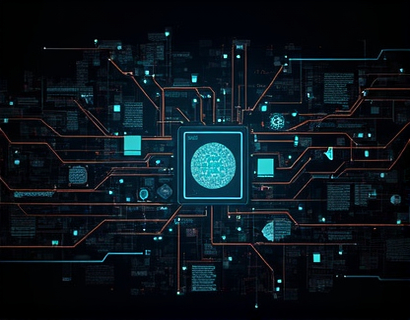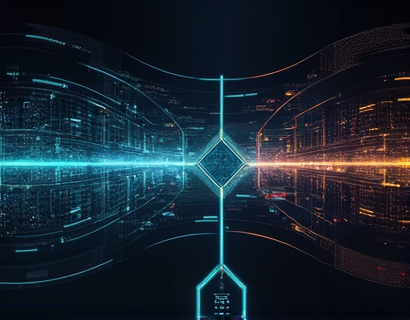Streamlining Business Disputes: Leveraging Next-Gen Arbitration Software for Enhanced Conflict Resolution and Operational Efficiency
In today's fast-paced business environment, conflicts and disputes are inevitable. These challenges can significantly impact operational efficiency, strain relationships, and hinder growth. However, with the advent of next-generation arbitration software, organizations have a powerful tool at their disposal to streamline dispute resolution processes. This article delves into the transformative impact of advanced arbitration tools, highlighting how they simplify resolution, save time and resources, and promote a more collaborative and harmonious work environment.
Understanding the Need for Advanced Arbitration Tools
Traditional dispute resolution methods often involve lengthy legal processes, high costs, and significant time investments. These methods can be adversarial, leading to further deterioration of relationships and a negative impact on business operations. The need for a more efficient, cost-effective, and collaborative approach to conflict resolution has become increasingly apparent. Next-generation arbitration software addresses these needs by offering innovative solutions that enhance the entire dispute management lifecycle.
Key Features of Next-Gen Arbitration Software
Modern arbitration software is designed with a range of features that make dispute resolution more accessible, efficient, and effective. Some of the key features include:
- Centralized Platform: A single, user-friendly interface where all parties can access and manage dispute-related documents, communications, and proceedings. <
- Automated Workflows: Streamlined processes that automate routine tasks, reducing manual errors and saving time. >
- Real-Time Collaboration: Tools that enable all parties to collaborate in real-time, fostering transparency and trust.
- Secure Document Management: Robust security measures to ensure the confidentiality and integrity of sensitive information.
- Customizable Templates: Pre-designed templates for common dispute types, speeding up the initial setup process.
- Integration Capabilities: Seamless integration with existing business systems, such as CRM and ERP, for a cohesive workflow.
Enhancing Operational Efficiency
The implementation of next-generation arbitration software can significantly enhance operational efficiency in several ways. First, automated workflows reduce the need for manual interventions, minimizing delays and errors. This automation ensures that disputes are handled promptly and consistently, without the bottlenecks often associated with traditional methods. Additionally, a centralized platform allows all stakeholders to access relevant information quickly, reducing the time spent on information retrieval and communication.
Real-time collaboration features further contribute to efficiency by enabling parties to work together seamlessly, regardless of their physical location. This capability is particularly valuable in global businesses where parties may be spread across different time zones. By facilitating immediate feedback and joint decision-making, these tools help resolve disputes faster, allowing businesses to return to their core operations with minimal disruption.
Promoting Collaborative Relationships
One of the most significant benefits of advanced arbitration software is its ability to foster collaborative relationships. Traditional dispute resolution methods often pit parties against each other, exacerbating tensions and making future cooperation difficult. In contrast, next-gen tools are designed to promote a more collaborative approach. Features such as real-time communication and joint document editing encourage open dialogue and mutual understanding.
By providing a transparent and structured environment, these tools help build trust among parties. The ability to track progress and see the contributions of all involved can demystify the resolution process, making it less confrontational and more constructive. This collaborative atmosphere not only aids in resolving current disputes but also lays the groundwork for stronger, more resilient business relationships in the future.
Cost Savings and Resource Optimization
Cost is a critical factor for businesses, and dispute resolution is no exception. Next-generation arbitration software offers substantial cost savings by reducing the expenses associated with traditional legal processes. Automated workflows and centralized platforms minimize the need for external legal counsel and reduce the time spent on administrative tasks. This efficiency translates directly into lower costs for organizations.
Moreover, the time saved through streamlined processes can be redirected towards more value-adding activities. Employees who previously spent hours on dispute-related tasks can focus on core business functions, driving productivity and growth. The reduction in legal fees and the optimization of resources make next-gen arbitration software a cost-effective solution for managing disputes.
Case Studies and Real-World Applications
To better understand the impact of next-generation arbitration software, let's examine a few real-world applications. A multinational corporation faced frequent cross-border disputes involving contract breaches and intellectual property violations. By implementing an advanced arbitration platform, the company was able to centralize all dispute-related activities, from initial filing to final resolution. The automated workflows and real-time collaboration features significantly reduced the resolution time, from several months to a few weeks.
Another example is a mid-sized manufacturing firm that experienced recurring supplier disputes. The firm adopted a next-gen arbitration tool that provided customizable templates and a user-friendly interface. This allowed the firm to handle disputes more efficiently, reducing the backlog and improving supplier relationships. The transparent process and immediate access to documentation helped build trust, leading to more cooperative and long-term partnerships.
Challenges and Considerations
While the benefits of next-generation arbitration software are clear, there are several challenges and considerations to keep in mind. One of the primary concerns is the initial setup and integration with existing systems. Organizations must ensure that the chosen software is compatible with their current technology infrastructure to avoid disruptions. Additionally, training staff to effectively use the new tools is essential for maximizing their benefits.
Another consideration is the need for clear policies and guidelines to govern the use of the software. Without proper framework, the potential for misuse or misunderstanding can undermine the effectiveness of the dispute resolution process. It is crucial for organizations to establish robust protocols and ensure all stakeholders are aligned on the use of these tools.
Future Trends in Arbitration Software
The field of arbitration software is rapidly evolving, with several emerging trends poised to further enhance dispute resolution. Artificial Intelligence (AI) and Machine Learning (ML) are being integrated into these platforms to provide predictive analytics and intelligent recommendations. AI can analyze past disputes to identify patterns and suggest optimal resolution strategies, further streamlining the process.
Blockchain technology is another area of interest, offering enhanced security and transparency. By recording all dispute-related transactions on a blockchain, organizations can ensure the immutability and traceability of documents, reducing the risk of tampering and fraud. As these technologies mature, they will likely become integral components of next-generation arbitration software, offering even greater efficiency and reliability.
Conclusion
Next-generation arbitration software represents a significant leap forward in business dispute resolution. By simplifying processes, saving time and resources, and promoting collaborative relationships, these tools offer a comprehensive solution to the challenges of conflict management. Organizations that embrace these innovations can navigate disputes with confidence, ensuring minimal disruption to their operations and fostering a positive business environment. As the technology continues to evolve, the future of dispute resolution looks brighter and more efficient than ever.










































